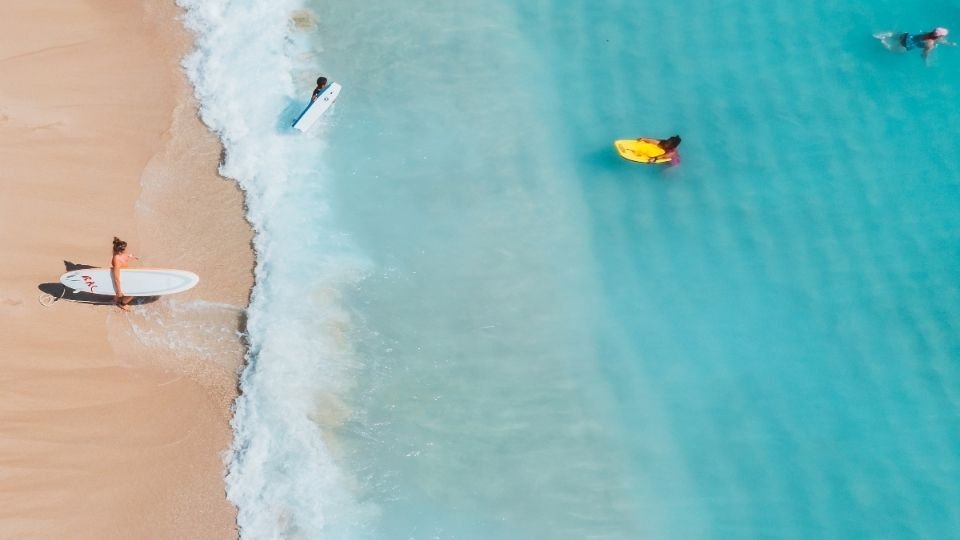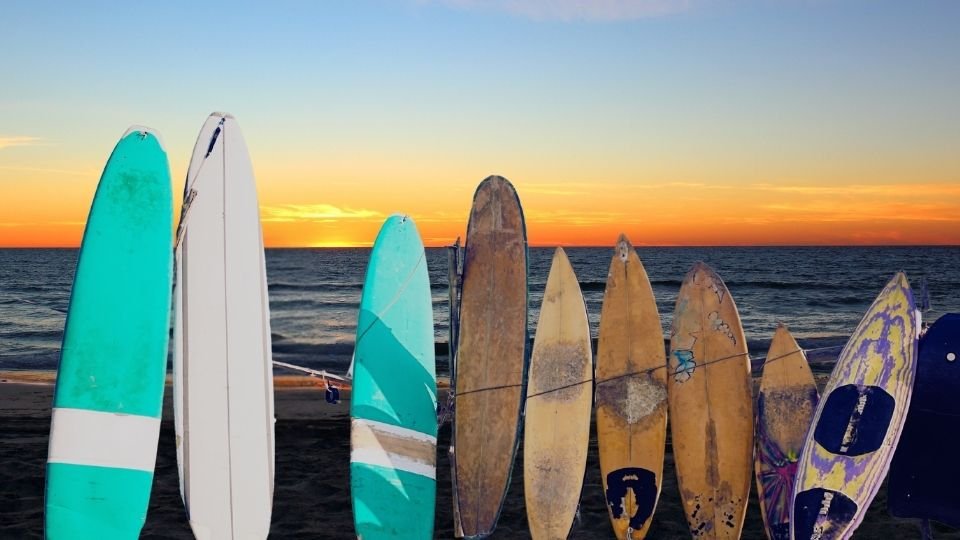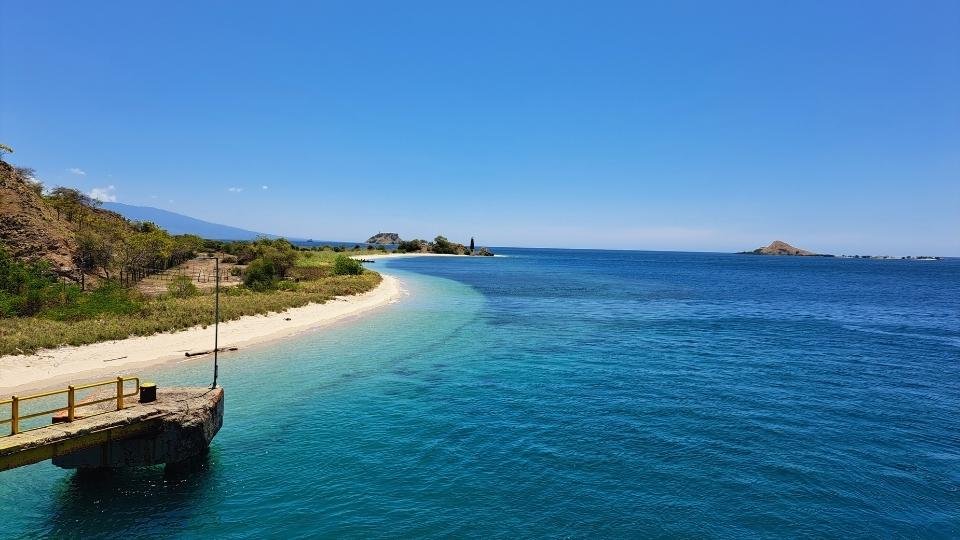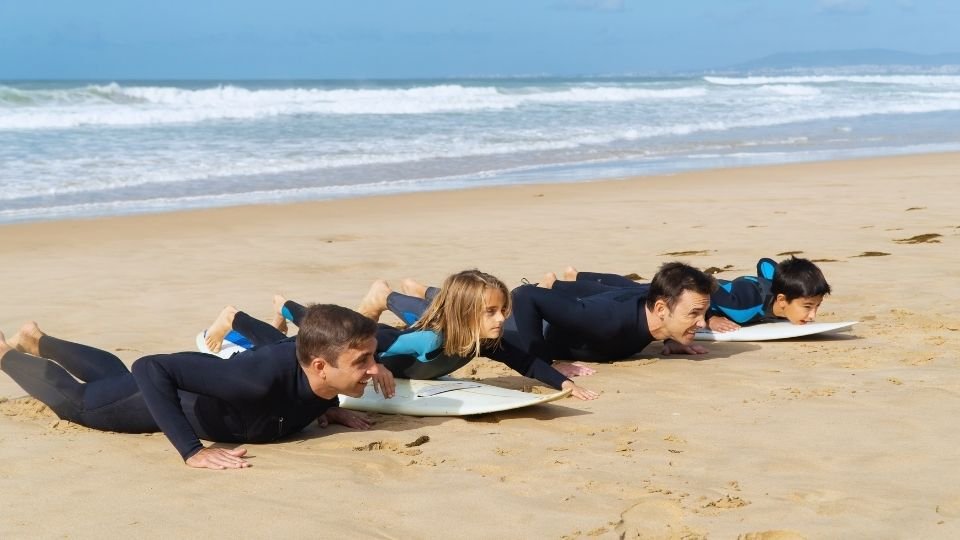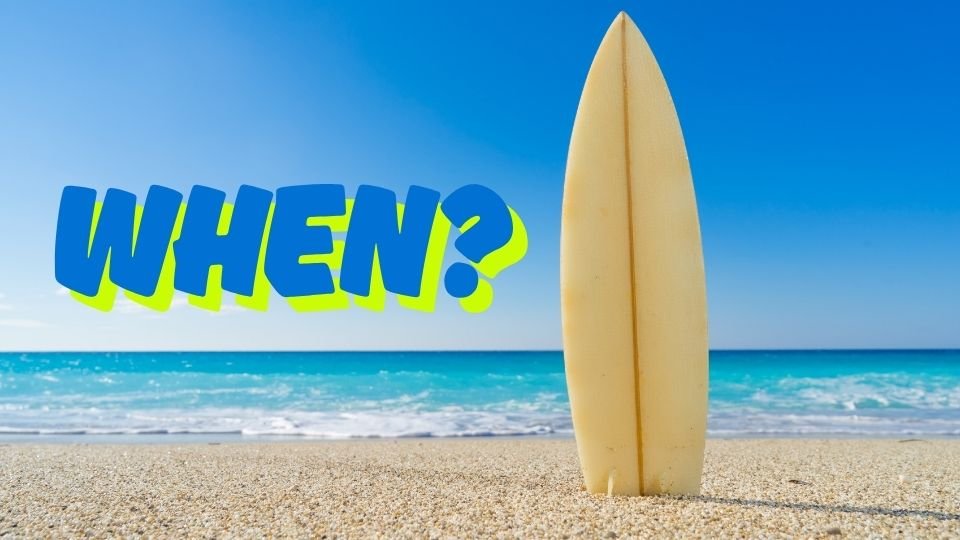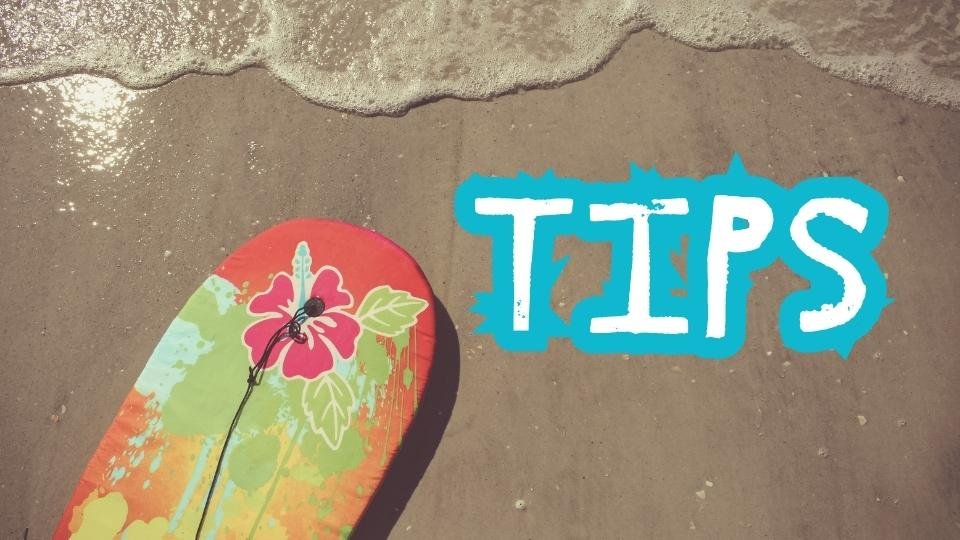
Surfing Tips for Beginners: Master the Waves in No Time. Surfing is an exhilarating sport that connects you to the ocean and challenges your body in unique ways. Whether you’re hoping to ride the waves in Bali, Hawaii, or your local surf spot, it’s important to start with the right foundation. If you’re a beginner, don’t worry—you don’t need to be a pro to enjoy surfing. In this guide, we’ll cover essential surfing tips for beginners to help you catch your first wave and have fun along the way.
1. Choose the Right Surfboard for Beginners
One of the most crucial aspects of learning to surf is choosing the right surfboard. If you’re just starting out, soft-top longboards are your best bet. These boards are more stable, float better, and give you ample time to practice balance and paddling. Ideal boards for beginners are usually 8 to 9 feet long and feature a foam surface, which is gentler on the body in case of falls.
Surfing Tips for Beginners. When selecting your board, avoid shortboards—while they look cool, they’re designed for more advanced surfers. Start with a longer board and gradually work your way to shorter ones as your skills improve.
2. Learn to Read the Ocean: Surfing Basics
Before you even touch a wave, it’s essential to understand how the ocean works. Reading the waves will help you identify where to paddle, when to catch a wave, and how to stay safe.
Begin by observing the surf before you enter the water. Look for areas where waves are breaking consistently and try to understand the flow of the tide. If you’re unfamiliar with surf terminology, here are a few key terms:
- Whitewater: Broken waves that have lost their power, perfect for beginners.
- Set: A series of waves that come in groups, typically bigger than the rest.
- Rip Current: A strong current that pulls surfers away from shore. Always paddle across rip currents, not against them.
Spending time learning the ocean dynamics will save you a lot of frustration and ensure a safer surfing experience.
3. Master the Pop-Up: A Key Surfing Move
A common challenge for beginners is learning how to pop up on the board. The pop-up is the transition from lying on your surfboard to standing up. It may feel awkward at first, but with practice, you’ll get the hang of it.
Surfing Tips for Beginners. Here’s how to practice:
- Lie on the board, keeping your body centered.
- Place your hands under your chest (like a push-up position).
- Push up quickly and bring your feet underneath you in one fluid motion.
- As you stand, make sure your knees are bent and your feet are positioned shoulder-width apart.
Practicing this movement on dry land or sand will help build muscle memory, making it easier when you’re in the water.
4. Focus on Your Stance and Balance
Once you’ve popped up, your stance is everything. A good surfing stance provides stability and control, helping you ride the waves with confidence.
Here’s how to get your stance right:
- Keep your feet shoulder-width apart.
- Bend your knees to absorb the wave’s energy.
- Look straight ahead, not down at your feet.
- Keep your weight centered, with your front foot pointed forward and your back foot perpendicular to the board.
This basic stance will help you maintain your balance and maneuver as you ride the wave.
5. Start in the White Water
As a beginner, you should start practicing in the whitewater—the foam that forms after waves break. This area offers smaller, safer waves that can still help you practice the basic movements of surfing.
Don’t rush to catch big waves until you feel comfortable handling smaller ones. Starting in the whitewater allows you to focus on getting your pop-up technique right while still feeling the thrill of catching a wave.
6. Take Surf Lessons for Beginners
If you want to progress quickly and safely, consider taking a surf lesson with a professional instructor. Surf schools offer lessons specifically tailored for beginners, which will help you avoid bad habits and learn the proper techniques from the start.
A certified surf instructor can also teach you about surf safety, wave selection, and how to handle different ocean conditions. Plus, they’ll provide the necessary equipment, so you don’t have to worry about purchasing gear immediately.
7. Respect Surf Etiquette
Surfing has its own set of rules—surf etiquette—designed to ensure everyone stays safe and has fun. As a beginner, it’s important to respect the established guidelines:
- Don’t drop in: If someone is already riding a wave, don’t paddle for it. Let them have their turn.
- Take turns: Surfing is a shared activity, so wait your turn to catch a wave.
- Hold onto your board: Don’t let your board float away. This could cause accidents or block other surfers.
Respecting surf etiquette helps build a positive and safe surfing environment for everyone in the water.
8. Stay Fit and Flexible
Surfing requires physical fitness, particularly core strength, balance, and endurance. While you don’t need to be in top shape to start, improving your fitness will enhance your experience.
Yoga is an excellent cross-training activity for surfers as it improves flexibility and balance. Swimming and other forms of cardio are also great ways to build the stamina you’ll need when paddling out for wave after wave.
9. Always Prioritize Surfing Safety
Surf safety is essential, especially for beginners. Before you enter the water, always check the surf conditions and weather reports. Make sure the waves aren’t too big for your skill level, and never surf alone if you’re just starting out.
Wear a surf leash to keep your board attached to your ankle, and always paddle out in areas where lifeguards are present if possible. If you’re unfamiliar with the surf spot, ask local surfers or instructors for advice on safe areas to practice.
10. Be Patient and Enjoy the Process
Learning to surf is a journey. Expect some wipeouts, missed waves, and days when it feels like you’re not progressing. But with time, practice, and a positive mindset, you’ll improve and gain confidence in the water.
Don’t rush the process. Celebrate small milestones, whether it’s your first pop-up, catching your first wave, or just feeling more comfortable in the water. Surfing is about enjoying the ocean, connecting with nature, and having fun!
Conclusion: Start Surfing Today!Surfing for beginners doesn’t have to be intimidating. By choosing the right board, understanding the ocean, and following essential surfing tips, you’ll be able to get started on the right foot. Always prioritize safety, take lessons, and most importantly—have fun. The ocean is waiting, and your surfing adventure is just beginning!

